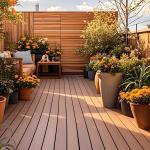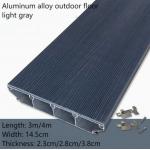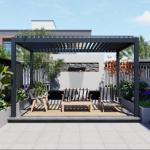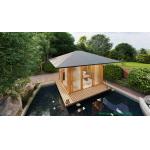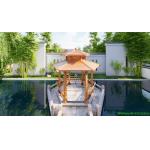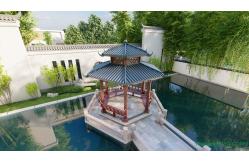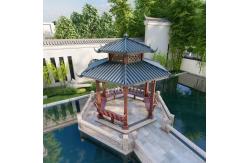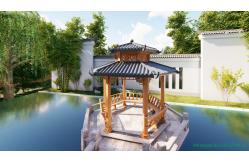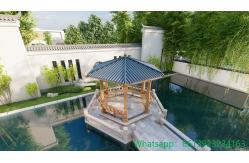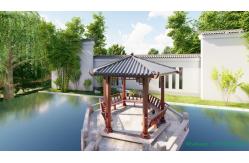An aluminum pavilion designed in the traditional Chinese style is a
modern adaptation of classic Chinese architectural principles,
combining the aesthetic and cultural significance of traditional
designs with the practical advantages of contemporary materials.
Here is a detailed description: The specification for an aluminum pavilion of Chinese traditional
style: | Specification | Details |
|---|
| Material | High-grade Aluminum alloy | | Roof Design | Pagoda-style, multi-tiered with upturned eaves | | Dimensions | Customizable: Common sizes range from 3m x 3m to 10m x 10m | | Height | Typically between 3m to 5m, adjustable according to design | | Roofing Material | Aluminum panels with weather-resistant coating, sometimes with
additional decorative tiles | | Color Options | Traditional colors (red, gold, green), customizable with
high-quality paint or powder coating | | Surface Finish | Powder-coated, painted, or anodized for enhanced durability and
aesthetic appeal | | Column Design | Intricate carvings, traditional motifs such as dragons, phoenixes,
and floral designs | | Base/Foundation | Aluminum base plates with options for concrete anchoring or
integrated footing systems | | Wall Panels (if any) | Optional, can include lattice designs or open frameworks | | Assembly | Modular components, pre-fabricated for easy on-site assembly | | Weight | Varies by size, generally light enough for easier transport and
installation | | Load Capacity | Designed to withstand local wind and snow loads, specific ratings
depend on size and design | | Lighting | Options for integrated LED lighting, often hidden within the
structure for a seamless look | | Maintenance | Low maintenance, periodic cleaning recommended | | Customization | Size, design details, color, and additional features (e.g.,
lighting, seating) can be customized | | Warranty | Typically offers 10-15 years warranty on structural integrity and
finish | | Environmental Impact | Made from recyclable materials, environmentally friendly
manufacturing processes | | Applications | Gardens, parks, cultural events, private residences, public spaces | | Additional Features | Options for built-in seating, decorative railings, and customized
inscriptions |
Design and StructureMaterial: - Aluminum: Chosen for its durability, lightweight nature, and resistance to
corrosion. Unlike wood, aluminum does not warp or rot, making it
ideal for long-lasting outdoor structures.
Roof Style: - Pagoda-style Roof: Characterized by multiple tiers with gracefully upturned eaves.
This design is not only visually striking but also functional, as
the extended eaves provide ample shade and protection from the
elements.
- Decorative Ridge Ornaments: Traditional Chinese roofs often feature ornate ridge ornaments,
which can be replicated in aluminum to maintain the authentic look.
Decorative Elements: - Intricate Carvings: Aluminum can be molded and etched with intricate patterns and
motifs commonly found in Chinese art, such as dragons, phoenixes,
and floral designs.
- Painted Finishes: The pavilion often features vibrant colors like red, gold, and
green, which are traditional in Chinese culture. These colors can
be applied using durable, weather-resistant paints or powder
coating.
Structural Elements: - Columns and Beams: The structural framework mimics the traditional wooden pavilions,
with elaborately designed columns and beams that often include
detailed engravings or embossments.
- Joinery: Modern techniques allow for seamless joints that replicate
traditional mortise and tenon joinery without visible screws or
bolts.
Functionality and UseShelter and Aesthetics: - The pavilion provides a sheltered space for relaxation, meditation,
or social gatherings. Its aesthetic appeal enhances the beauty of
gardens, parks, and cultural spaces.
Cultural Significance: - Pavilions are deeply rooted in Chinese culture, symbolizing
harmony, balance, and connection with nature. An aluminum pavilion
continues this tradition while incorporating modern materials and
methods.
Practical AdvantagesDurability: - Aluminum is highly resistant to weather elements, including rain,
snow, and UV rays. This ensures the pavilion remains in excellent
condition with minimal maintenance.
Maintenance: - Compared to traditional wooden pavilions, aluminum structures
require less upkeep. Periodic cleaning is typically sufficient to
maintain their appearance and structural integrity.
Eco-friendliness: - Aluminum is a recyclable material, contributing to environmental
sustainability. The production process can also be designed to
minimize waste and energy consumption.
Modular and Customizable: - Many aluminum pavilions are designed with modular components for
easy assembly and disassembly. This feature makes them versatile
for various settings and purposes.
- Customization options are extensive, allowing for specific sizes,
designs, and colors to suit individual preferences and site
requirements.
Installation and MaintenanceAssembly: - The pavilion is typically pre-fabricated, making on-site assembly
straightforward. This reduces construction time and disruption to
the surrounding environment.
Maintenance: - The low maintenance needs are a significant advantage, with only
occasional cleaning and inspections required to ensure longevity
and aesthetics.
Applications- Residential Gardens:
- Enhances the beauty and utility of private gardens, providing a
tranquil space for homeowners to enjoy.
- Public Parks:
- Serves as a cultural and aesthetic landmark in public parks,
offering visitors a shaded retreat and a place for community
events.
- Cultural Sites:
- Adds to the authenticity and ambiance of cultural and historical
sites, often used as part of the landscape architecture to reflect
traditional Chinese heritage.
ConclusionAn aluminum pavilion in the traditional Chinese style represents a
perfect blend of historical charm and modern engineering. Its
design honors centuries-old architectural practices while
leveraging the advantages of contemporary materials, resulting in a
structure that is beautiful, functional, and enduring. We(Foshan Nature Building Materials co) are a professional
manufacturer of aluminum alloy pavilions from Foshan, China. We
have been engaged in the research and development of pavilion
manufacturing and sales for more than 10 years and have won the
recognition of domestic and foreign customers. We hope to have the
opportunity to serve you. |
